Author: NRC Admin
-
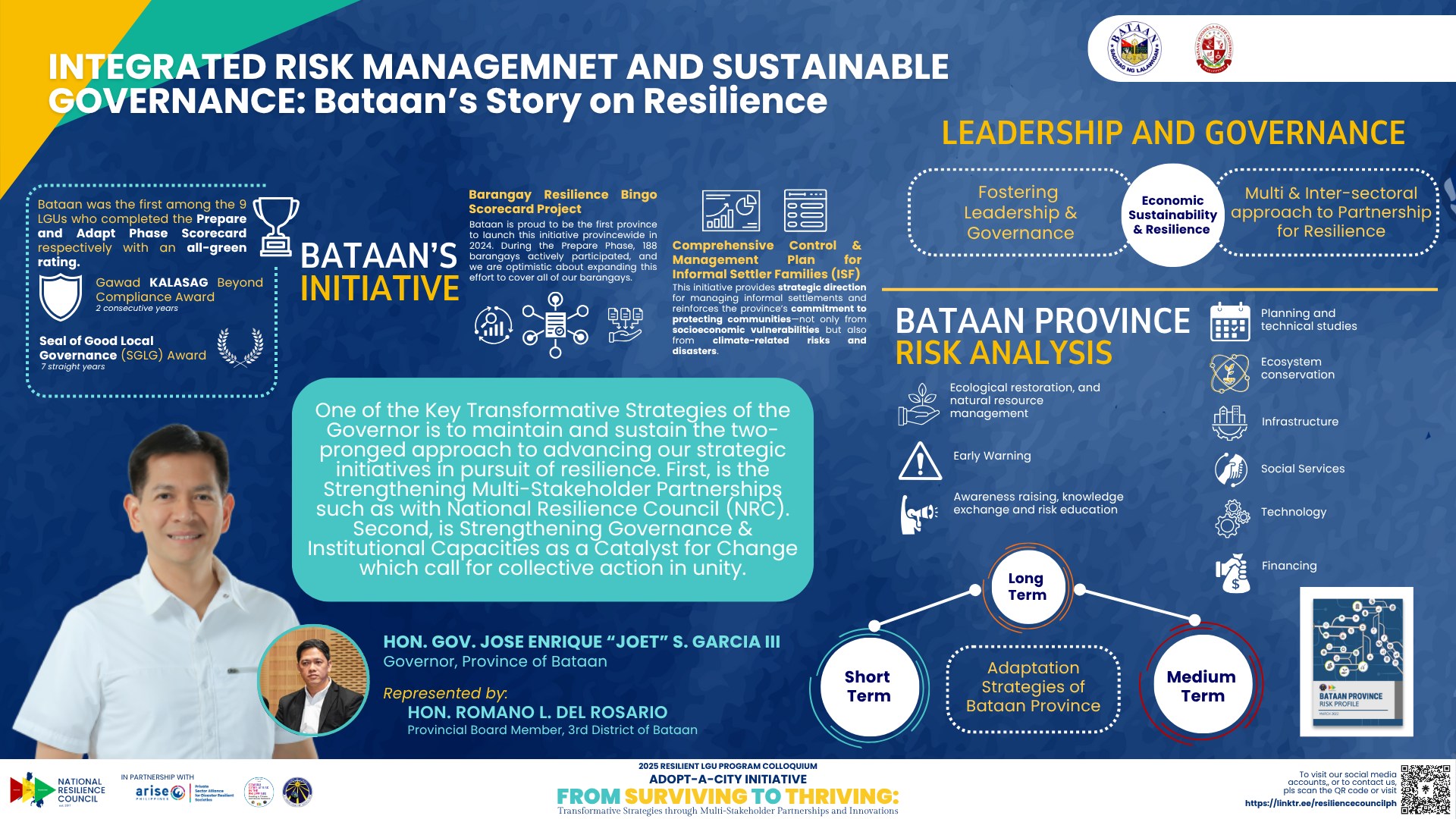
2025 RLGUP COLLOQUIUM INTEGRATED RISK MANAGEMNET AND SUSTAINABLE GOVERNANCE: Bataan’s Story on Resilience
At the 2025 RLGUP Colloquium, Bataan showcased its commitment to resilience through a powerful video presentation by Hon. Gov. Jose Enrique S. Garcia III, titled “Integrated Risk Management and Sustainable Governance: Bataan’s Story on Resilience.” Representing him in the panel discussion, Board Member of the 3rd district Hon. Romano “Bokal Popoy” L. Del Rosario quoted…
-
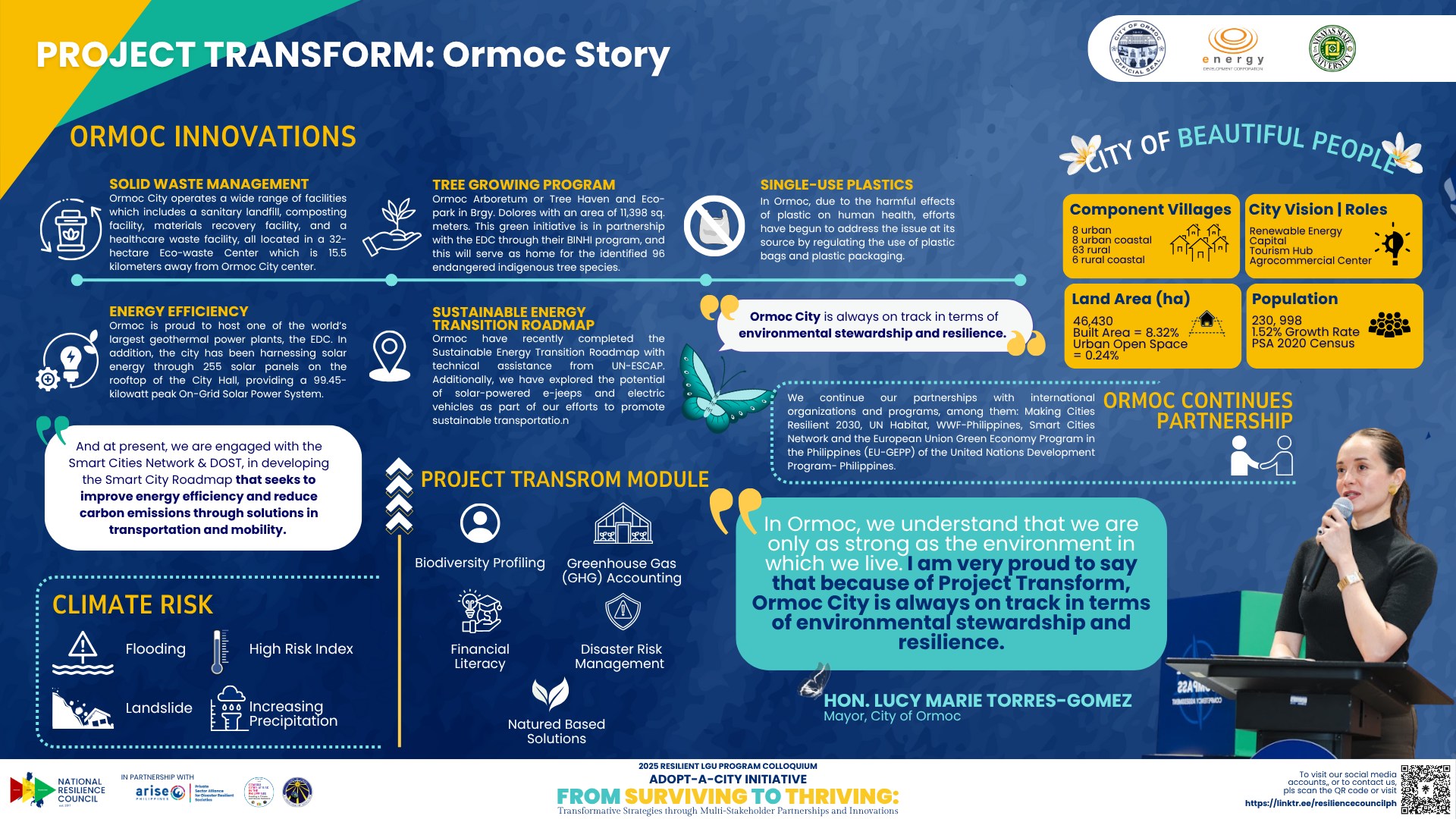
2025 RLGUP COLLOQUIUM PROJECT TRANSFORM: Ormoc Story
Ormoc City is often celebrated for its natural beauty and vibrant culture—but beyond its scenic charm lies a powerful story of resilience, innovation, and transformation. At the 2025 RLGUP Colloquium, Hon. Lucy Torres-Gomez presented this inspiring journey through her talk titled “Project Transform: The Ormoc Story.” In her presentation, Mayor Torres-Gomez highlighted the city’s major…
-
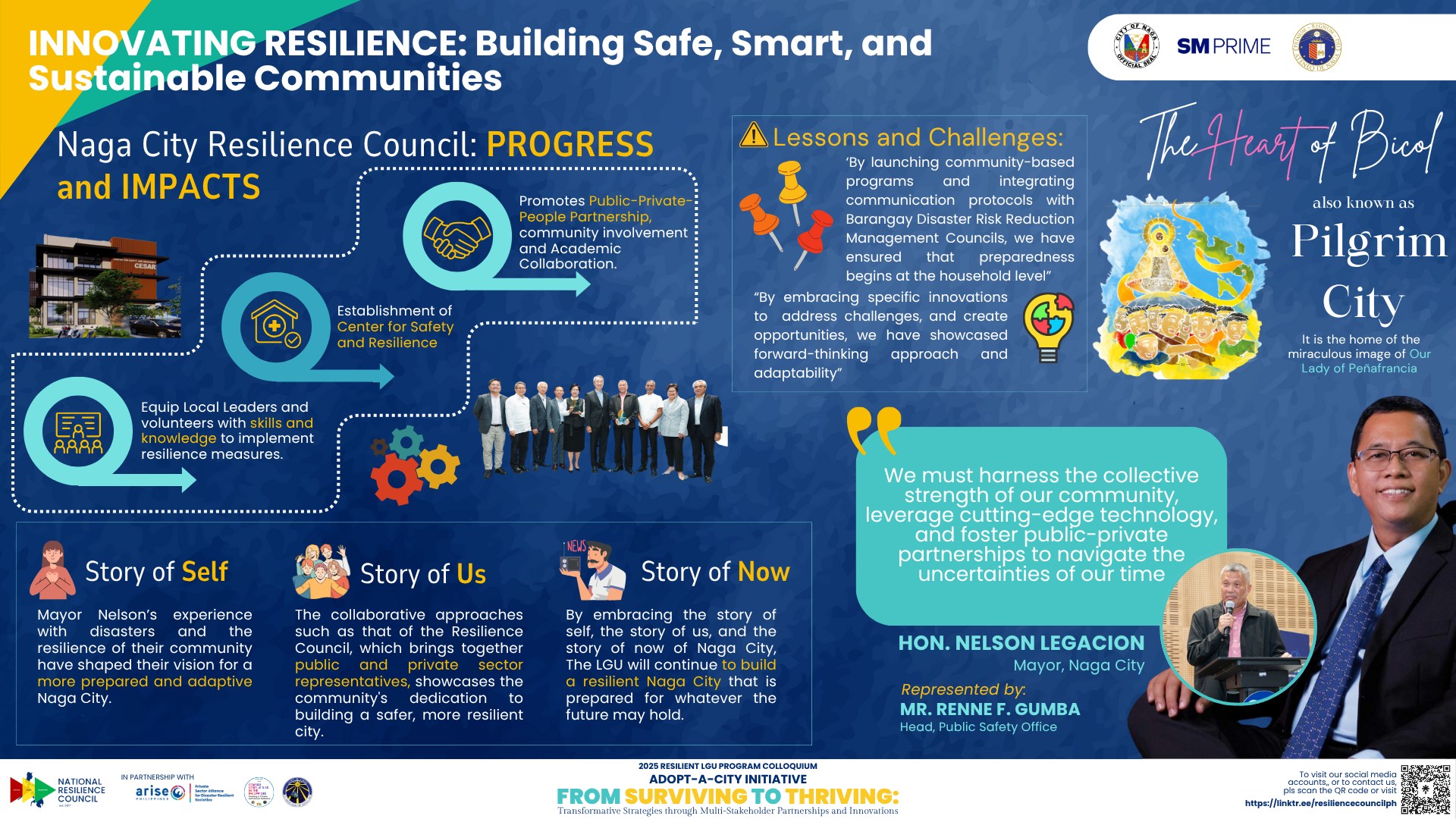
2025 RLGUP COLLOQUIUM INNOVATING RESILIENCE: Building Safe, Smart, and Sustainable Communities
At the 2025 RLGUP Colloquium, Naga City showcased the progress and impact of its resilience initiatives through a presentation titled “Innovating Resilience: Building Safe, Smart, and Sustainable Communities.” Though Mayor Nelson Legacion was unable to attend, he was ably represented by Mr. Renne F. Gumba, Head of the Public Safety Office. In his presentation, Mr.…
-
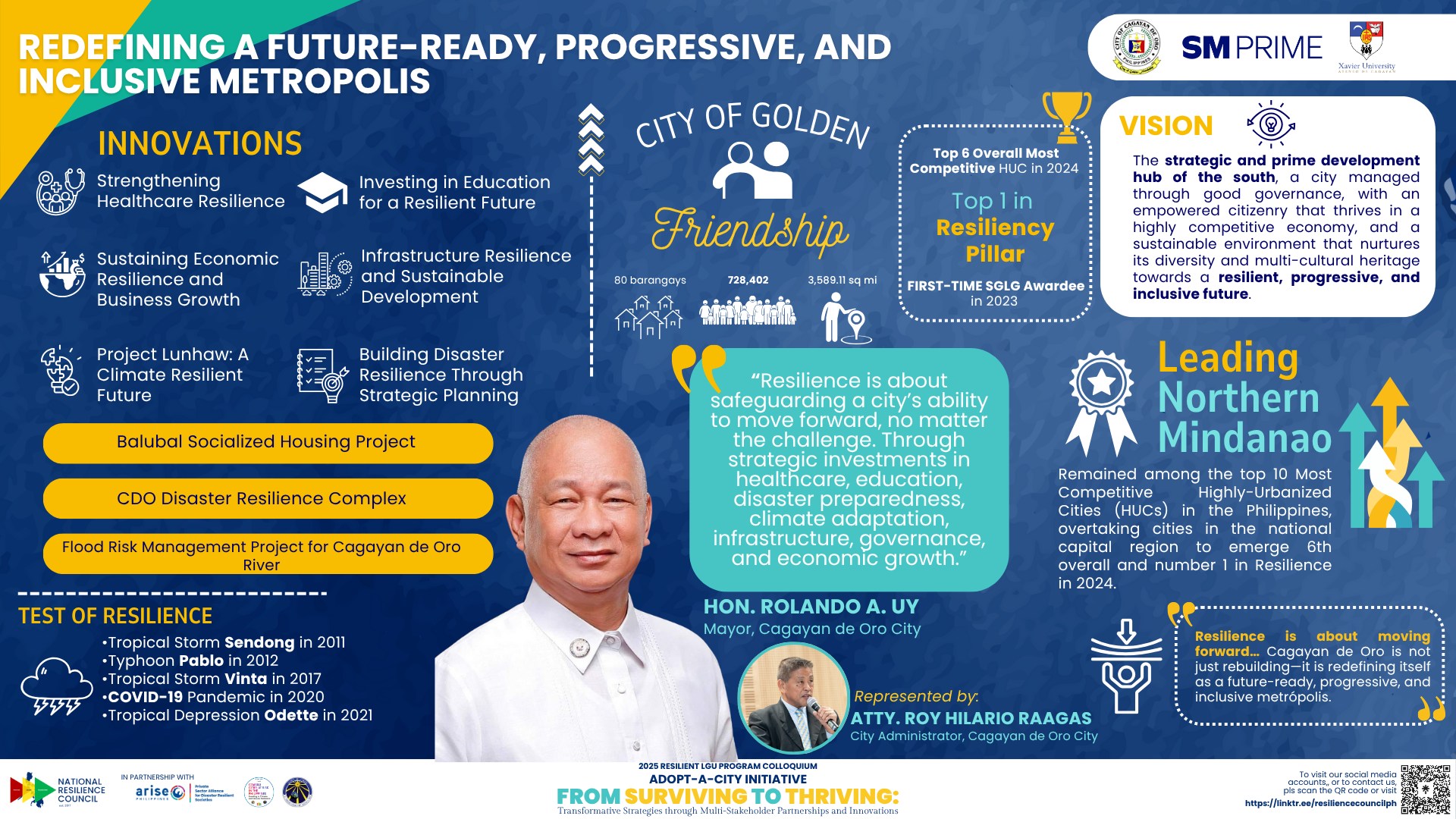
2025 RLGUP COLLOQUIUM REDEFINING A FUTURE-READY, PROGRESSIVE, AND INCLUSIVE METROPOLIS
The City of Golden Friendship, Cagayan de Oro (CDO), presented its resilience initiative titled “Redefining a Future-Ready, Progressive, and Inclusive Metropolis.” Representing the city was Atty. Roy Hilario Raagas, City Administrator, who highlighted the innovative programs that have helped CDO achieve significant milestones in building resilience. The presentation underscored the city’s achievements, positioning CDO as…
-
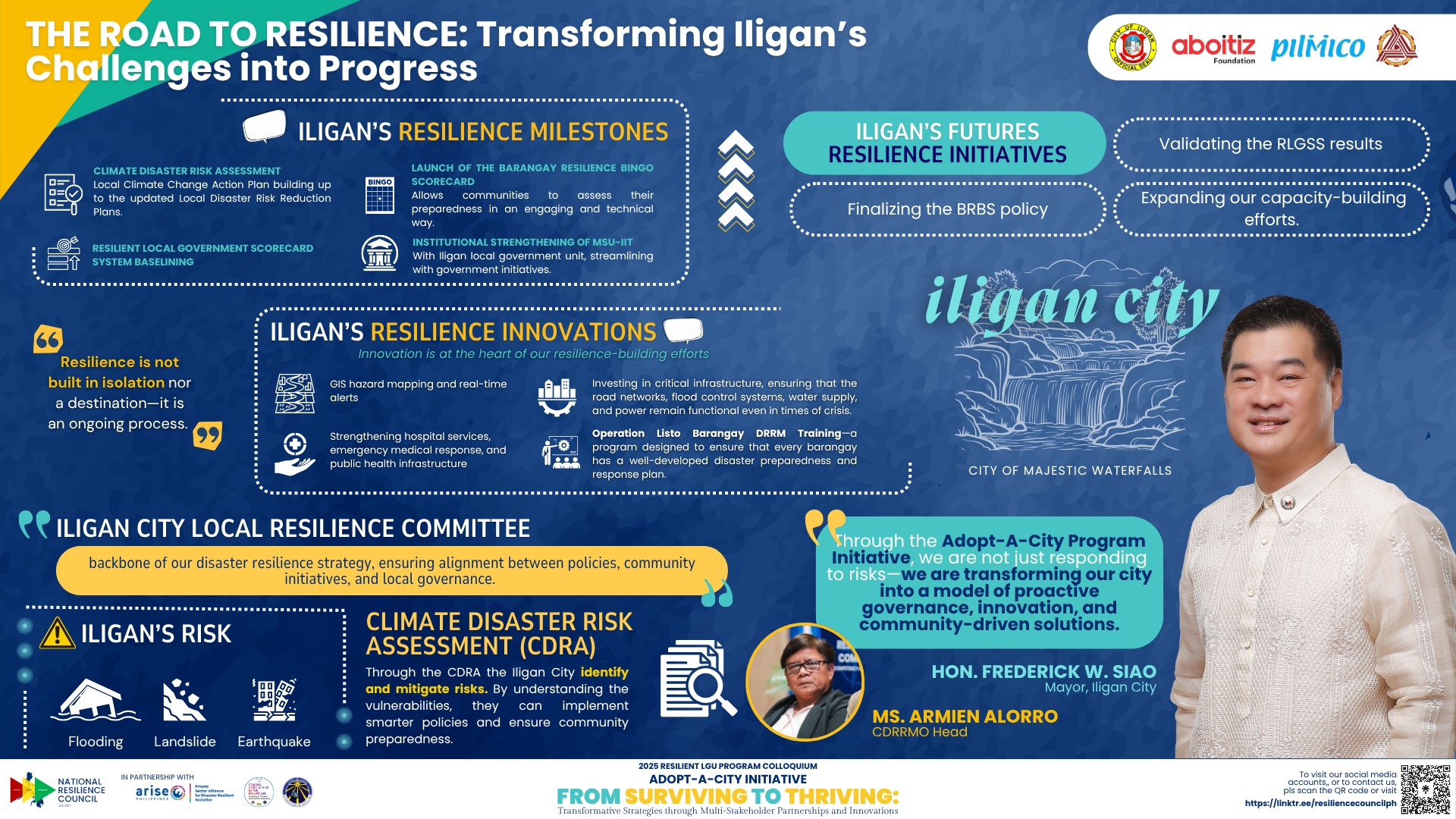
2025 RLGUP COLLOQUIUM THE ROAD TO RESILIENCE: Transforming Iligan’s Challenges into Progress
In a compelling virtual presentation during the 2025 Resilient Local Government Units Program (RLGUP) Colloquium, Hon. Frederick W. Siao, Mayor of Iligan City, highlighted the city’s strategic efforts in disaster resilience and sustainable development. Titled “The Road to Resilience: Transforming Iligan’s Challenges into Progress,” the presentation reflected Iligan’s evolving approach to risk governance, emphasizing innovation,…
-
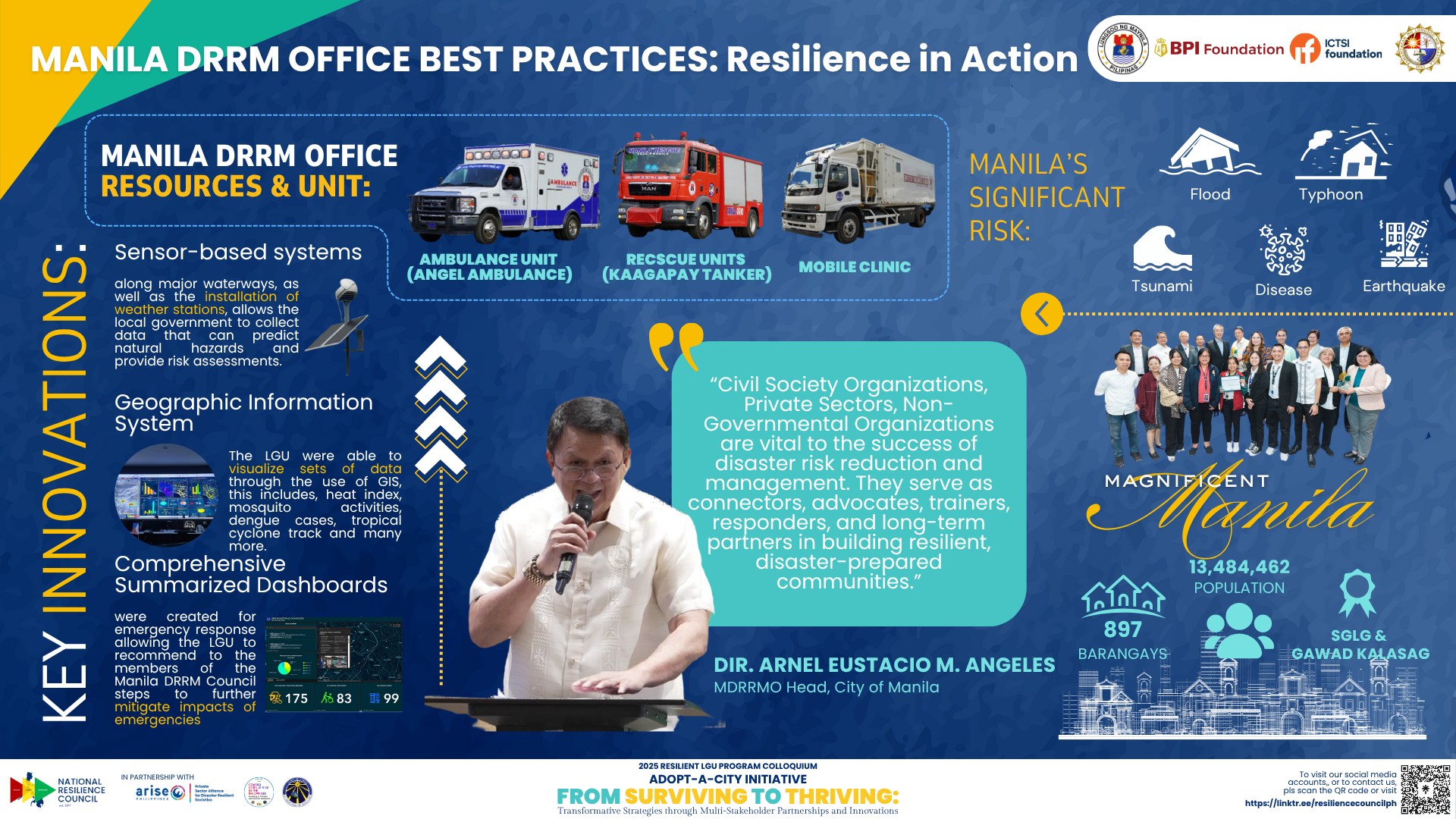
2025 RLGUP Colloquium MANILA DRRM OFFICE BEST PRACTICES: Resilience in Action
The City of Manila is recognized for its cutting-edge innovations that showcase the power of advanced technology in Disaster Risk Management (DRM). Dir. Arnel Eustacio M. Angeles, Director of the Manila Disaster Risk Reduction and Management Office, presented the city’s resilience initiatives in his presentation titled “Manila DRRM Office Best Practices: Resilience in Action.” His…
-
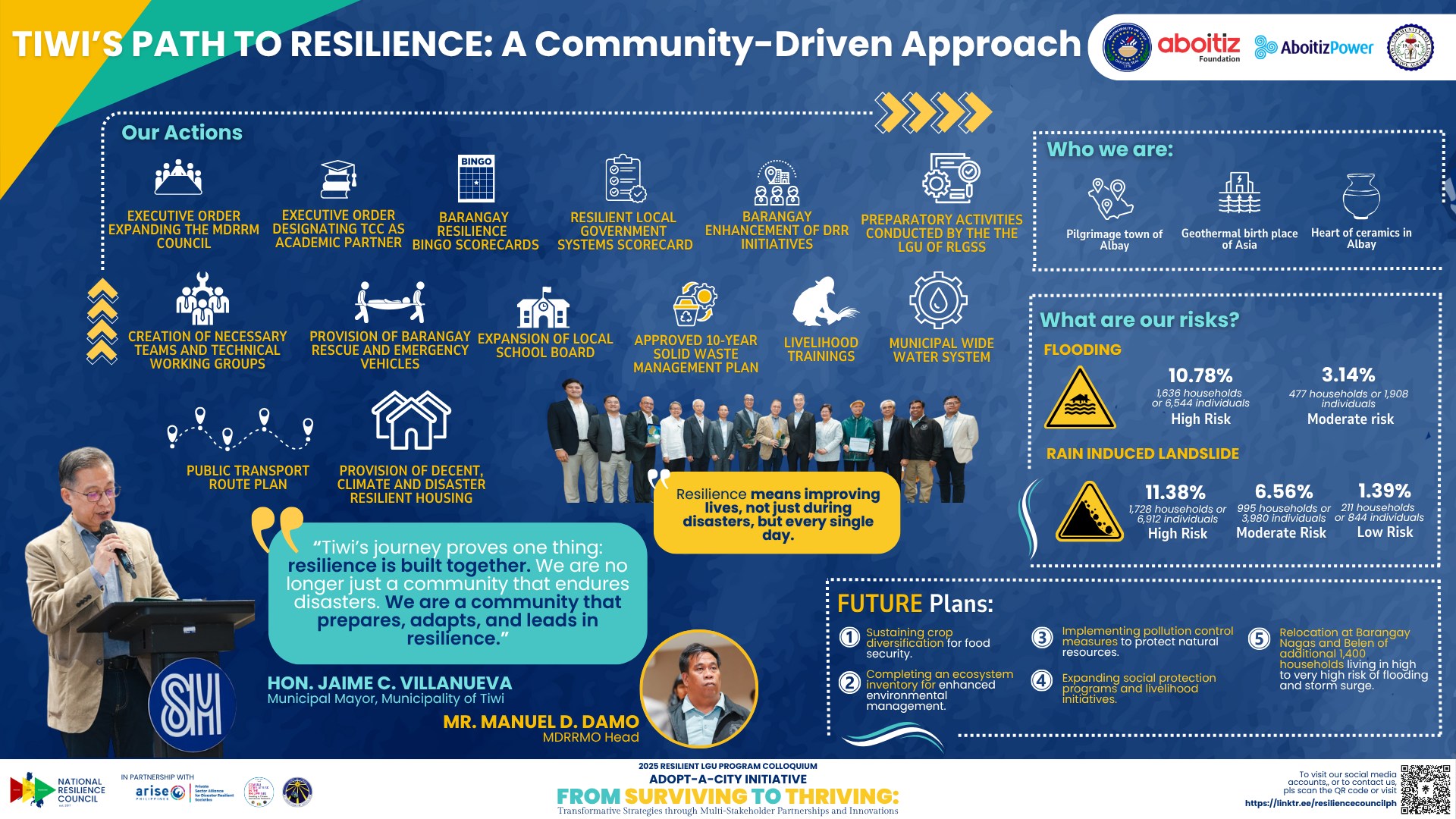
2025 RLGUP Colloquium TIWI’S PATH TO RESILIENCE: A Community-Driven Approach
Hon. Jaime C. Villanueva, Mayor of Tiwi, shared the municipality’s inspiring journey toward resilience through his presentation titled “Tiwi’s Path to Resilience: A Community-Driven Approach.” His presentation emphasized Tiwi’s commitment to improving the quality of life for its citizens by integrating resilience into daily community practices. He stated, “Tiwi’s journey proves one thing—resilience is built…
-
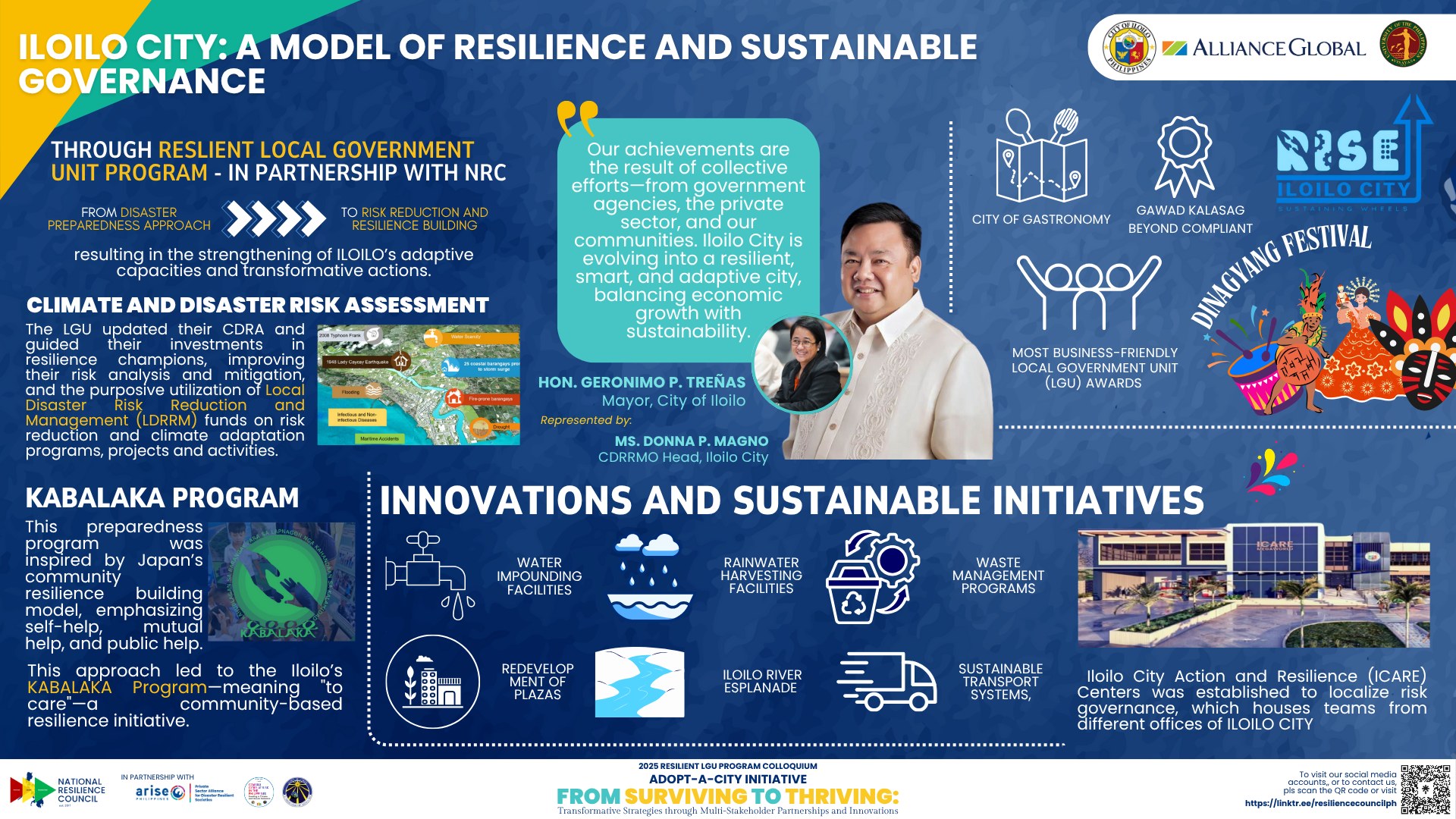
2025 RLGUP Colloquium Iloilo City: A Model of Resilience and Sustainable Governance
At the 2025 RLGUP Colloquium, Hon. Geronimo P. Treñas, Mayor of Iloilo City, delivered a virtual presentation highlighting the city’s resilience initiatives. Representing him at the panel discussion, Ms. Donna P. Magno, Head of the City Disaster Risk Reduction and Management Office (CDRRMO), emphasized Iloilo’s ongoing efforts in disaster preparedness and sustainable urban development. The…
-

2025 RLGUP Colloquium Building a Resilient Baguio: A Collaborative Journey
Hon. Benjamin B. Magalong, Mayor of Baguio City, presented at the 2025 Resilient LGU Program Colloquium, highlighting Baguio’s resilience journey. He emphasized the power of collaboration and national support between different sectors of society. He quoted, “We take pride in our community-centric approach. Through public-private partnerships and workshops, we have increased awareness and participation in…